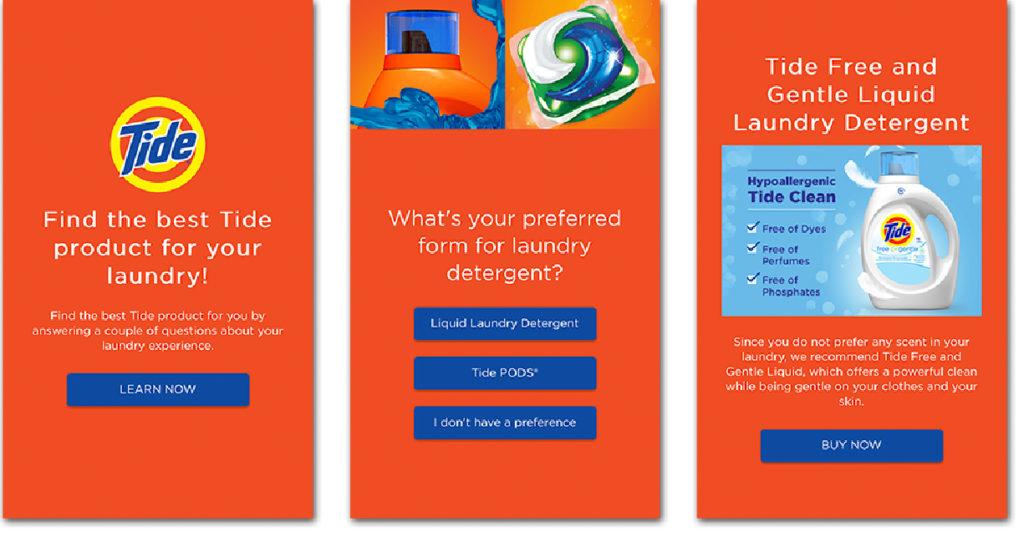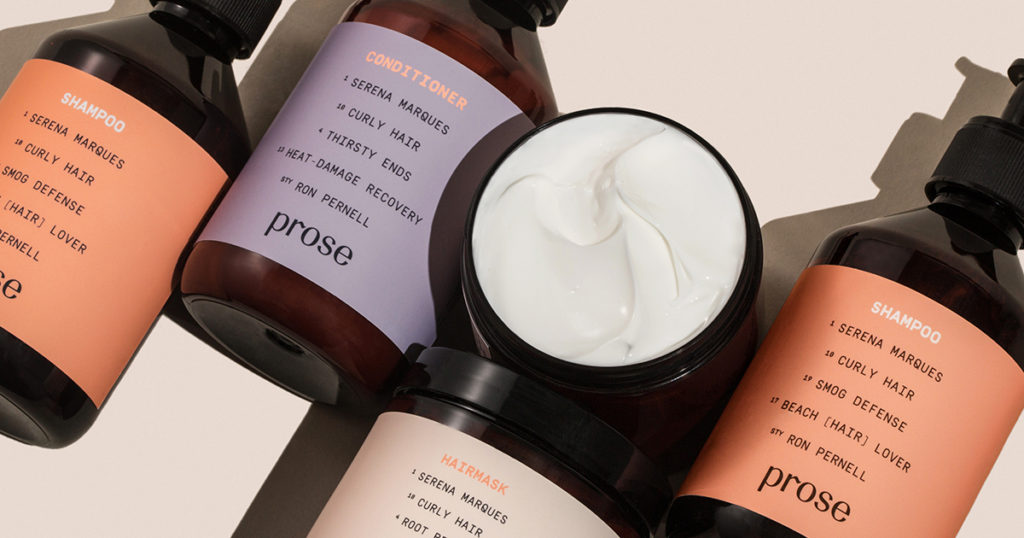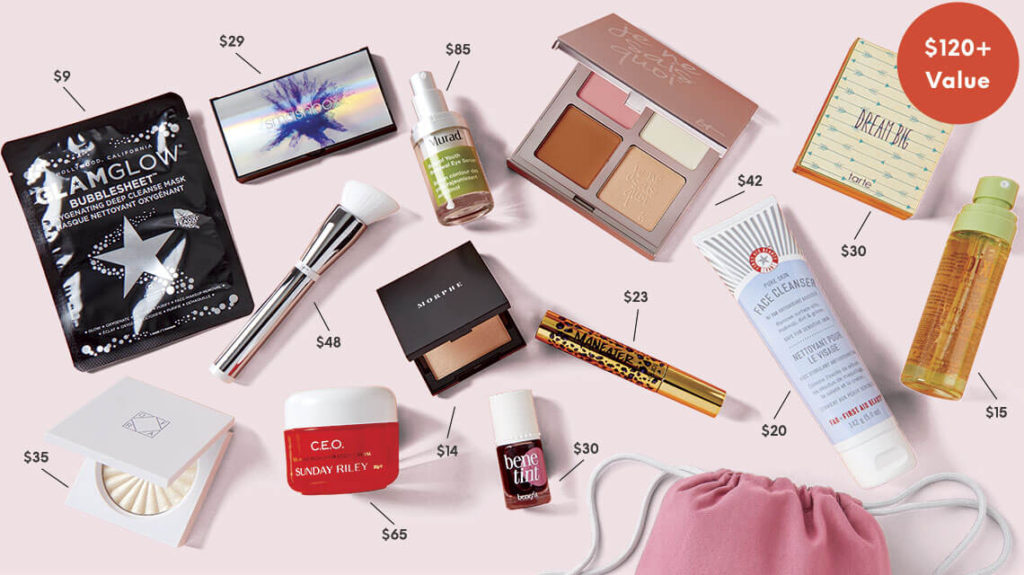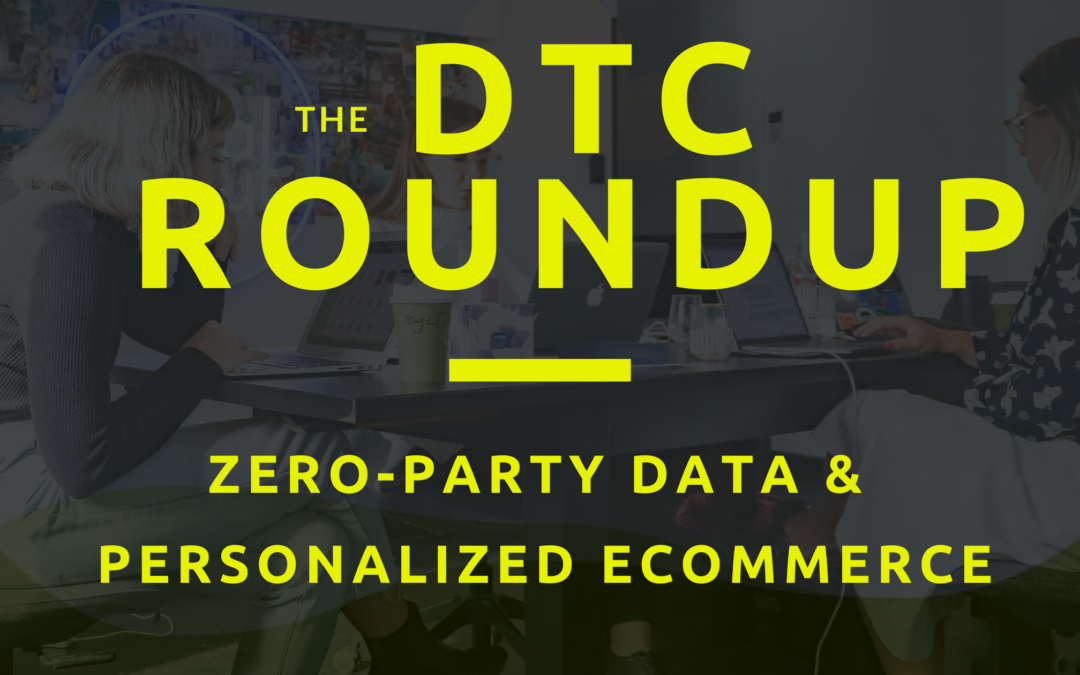Here’s the challenge that we face as marketers: we want to create personalized marketing for our consumers, but understanding exactly how to personalize is getting harder.
Consumers want to receive a personal experience–71% of consumers are frustrated when they do not receive it, per Segment.
And shoppers will happily spend more and become repeat customers if they do receive a personalized experience.
So there are significant dollars attached to the challenge of personalization for ecommerce brands.
But how exactly do consumers want to see?
You simply have to ask.
And the answers you receive become zero party data.
What Is Zero-Party Data & Why Does It Matter?
Zero-party data is that which a consumer actively and deliberately shares with a brand. This includes things like purchase goals, challenges, personal preferences.
This is obviously incredibly valuable, as it removes all guesswork and assumptions about consumers.
Thus, a brand can get a clear picture of who their customer is. Marketing campaigns, offers, and product recommendations can be tailored to the exact needs of your shoppers.
Marketers collect this data by connecting directly with consumers. Rather than making inferences and assumptions, you simply ask! If they trust your brand and value the interactions they have with you, consumers will willingly and intentionally share.
Consumers need to be entertained, engaged, and receive something in return for their attention and preference data. Brands can deliver this through interactive experiences that serve a dual purpose — they can conduct research and accrue opt-ins all while delivering an enjoyable experience with a tangible value exchange for the consumer.

source: Forrester
Historically, there has been First-Party Data, which is based on the behavior of a consumer–their activity on a website, email, and historical transaction data (like purchases).
Third-Party Data is gathered from sites and sources that are not your own–for example gathering data of your customers from Facebook or Google Analytics. This can include data on interests, behaviors, and demographic data.
Zero-party data is a term created by Forrester: “is that which a customer intentionally and proactively shares with a brand. It can include preference center data, purchase intentions, personal context and how the individual wants the brand to recognize her.”
Zero-Party data is the foundation of building a relationship with consumers. If you understand exactly what their motivations, interests and preferences are, you are able to create a relevant experience.
And this ability to create a personalized experience is how brands will differentiate, and succeed, in the future.

Source – Cheetah Digital
How To Capture Zero Party Data
In order to obtain Zero-Party Data, there must be:
- Established trust – in the era of data breaches and GDPR, a consumer must trust you before they share personalized information like an email address. Think about the last time that you shared your email address with a sketchy site offering you a free cruise? It doesn’t happen any more, unless you inherently trust the site.
- Exchange of value – Consumers share Zero-Party data when there is an exchange of value. It must be an immediate show of value, and something that will ultimately benefit the consumer–this can be in the form of entertainment, education, or a more relevant customer experience.
Zero-Party Data Drives The Future of eCommerce
The most innovative DTC brands use Zero-Party Data to create personalized products. This means that every customer receives a unique product specific to their profile, preference, and needs.
Quizzes are effective tools for gathering Zero-Party Data. WIth just a handful of questions, consumers share information on their preferences, and brands can gather more leads along with the data to deliver a better shopping experience.
SHAMPOO

Shampoo brand Prose uses a quiz to understand customers needs and ideal shampoo. And it has been a success thus far, on track for $50 million in revenue in 2020, triple last year’s figure.
“Why One Entrepreneur Thinks Millions of Americans Will Spend $25 on His Personalized Shampoo – “Based on customers’ answers to a detailed 25-question online survey, which asks about hair type, scalp health and even Zip code, the software quickly determines the mixture each individual should get. Prose says it can deliver up to 79 trillion possible formulations using more than 160 ingredients, which range from the prosaic (coconut oil) to the exotic (butterfly pea flower). As with any business that relies on data and machine learning, the more customers who complete Prose’s questionnaire (so far, more than 2 million have), the more information it has to refine its products.”

COSMETICS

source: Digital Commerce 360
Cosmetics brands need to have personalized experiences. Skin tone and facial features vary greatly, and require guidance to pair the customer with the appropriate product. COVID-19 has shut down the in-person experience, forcing cosmetics brands to generate Zero-Party Data to recommend the right product based on the shopper’s needs.
Brands like Ipsy and Benefit have pivoted quickly in the pandemic, using quizzes and augmented reality to reach customers in new ways and increase revenue over pre-COVID-19 figures.
Cosmetics retailers lean into personalization to reach consumers online
Other good reads this week:
- Customer Experience: As the eCommerce marketplace gets more competitive, the customer experience is going to be the defining competitive advantage. So how do you create a culture of customer centricity throughout your company? CXL offers a thorough analysis of creating customer centricity, including: transparency of data, cross-team collaboration and faster (and more rigorous) experimentation
- eCommerce is booming: “U.S. e-commerce grew 44.5% in the second quarter, the fastest growth in over two decades, lifting e-commerce share of total retail to 16.1%. “ – Marketplace Pulse
- Amazon: Amazon announces a new virtual event for sellers, Amazon Accelerate, our biggest-ever U.S. event dedicated to seller success. This free, three-day virtual event will deliver insights, strategies, and techniques for how your small business can thrive on Amazon.” Learn more and register here

